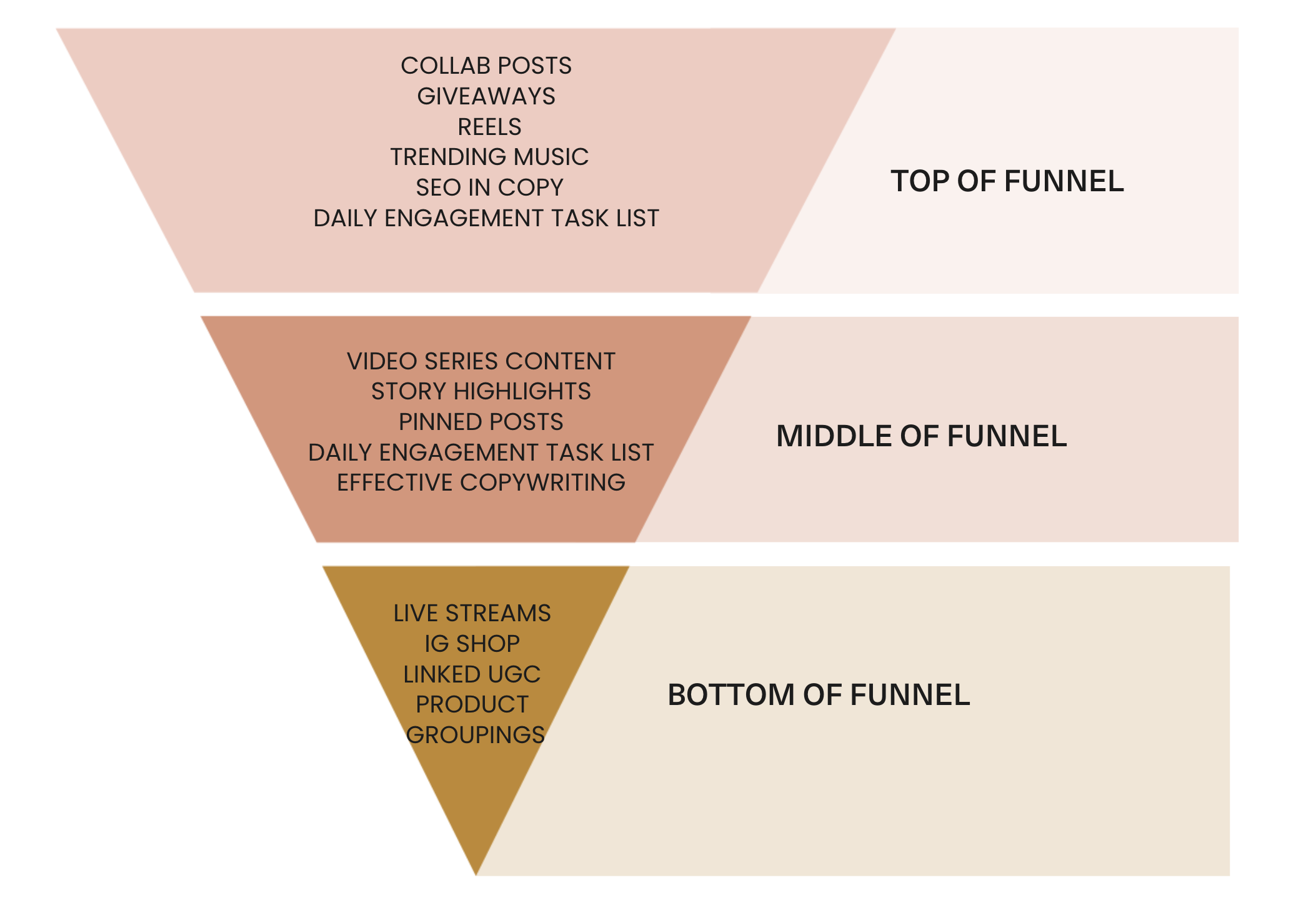5 Proven Content Marketing Strategies to Boost E-commerce Sales in 2025
E-commerce brands today face a common challenge: creating content that actually converts visitors into customers. While many businesses excel at other areas of marketing, content creation remains their biggest obstacle to sustainable growth.
We've worked with hundreds of e-commerce brands and consistently see the same mistakes: over-investing in expensive photo shoots without strategic planning, or postponing content creation while waiting for the "perfect" strategy.
The digital marketing landscape has evolved dramatically over the past five years. What worked in 2020 won't drive results in 2025. Here are five proven content marketing strategies that successful e-commerce brands use to increase conversions and build loyal customer communities.
#1 Plan Funnel-Driven Content
This means knowing what types of content - both format and theme - drives your audience to take further action based on how far along they are in the path to purchase. Thinking of what purpose content needs to serve before it’s created will ensure that you have a clear way of measuring its effectiveness - which ultimately will help you track ROI. Some basic guidelines of what type of content works in each stage of the purchase funnel:
Top of Funnel (Awareness Stage)
Educational blog posts that solve customer problems
Instagram Reels showcasing industry trends
Infographics explaining complex topics
How-to videos demonstrating product uses
Middle of Funnel (Consideration Stage)
Case studies featuring successful customers
Product comparison guides
Lead magnets like downloadable guides
Email series nurturing prospects
Bottom of Funnel (Decision Stage)
Customer testimonials and reviews
Product demonstrations and tutorials
Detailed buying guides
Limited-time offers and promotions
Pro tip: Different social media platforms work better for different funnel stages. Instagram Stories excel at awareness, while detailed YouTube videos drive consideration-stage engagement.
#2 Tell a Story, Don’t Just Show Products
Modern consumers crave authentic connections with brands. Brand storytelling through narrative-driven content captures attention far more effectively than traditional product-focused marketing.
Focus your content shoots on capturing:
Customer emotions and experiences
Lifestyle moments your target audience relates to
Brand values in action
Day-in-the-life scenarios
For example, if your products appeal to outdoor enthusiasts, create content showing real customers enjoying nature, overcoming challenges, and building memories – not just product specifications.
#3 Feature Real People for Authentic User-Generated Content
No offense models, we know you’re real people too, but there are unique benefits (and potential cost savings) to featuring real customers and telling the story of real people. By working with creators, micro-influencers, developing a UGC (user generated content) strategy and identifying brand advocates who have their own audience, you can much more effectively accomplish the goal of storytelling, and get a higher volume of content for the effort. Shipping product and creative briefs to creators is cost-effective, scalable and often more relevant to a platform-native audience. Oftentimes, this allows for wider distribution of your content as well. There are many ways you can do this at different budget levels - don’t forget about your employees, family and friends!
#4 Optimize Content Distribution Across All Channels
The worst thing a brand can do with their content is not have a distribution plan for it. It may sound surprising, but tons of brands make the mistake of investing in content, and then don’t use most of it, or still don’t have the right content for their different distribution channels. Before any content shoot (whether in-house or creator campaigns) ensure you know eɛacrtly how content will be distributed, then ensure you have content that you know performs well for that channel - make sure you’re leaving a shoot with stills, GIFs, reel content, TikTok video, behind-the-scenes content and product detail page content.
#5 Prioritize Mobile-First Content Creation
Make sure you shoot your content in a way that allows you to add captions, or bold typography for thumb-stopping power. More often than not, users will be consuming your content on silent, so make sure that there is room for captions or teɛt and don’t rely too heavily on people talking in the video. And yes, it still needs to be said, make sure you are shooting vertical video. To ensure your email campaign looks good on mobile devices, focus on capturing smaller, images to ensure fast loading times on mobile devices and avoiding compleɛ backgrounds to avoid distractions.
Measuring Content Marketing ROI
While there are many things to take into consideration when trying to improve your content strategy, one of the most important factors is making sure that you are seeing an ROI on your creative content. Track these key metrics to ensure your content marketing strategy delivers measurable results:
Conversion rate from content to purchase
Cost per acquisition through content channels
Customer lifetime value from content-driven customers
Engagement rates across platforms
Email open and click-through rates
Ready to Transform Your Content Strategy?
Implementing these five content marketing strategies will help your e-commerce brand build stronger customer relationships, increase conversions, and achieve sustainable growth in 2025.
The key to success lies in strategic planning, authentic storytelling, and consistent execution across all distribution channels. Start with one strategy, master it, then expand to others.
Need help implementing these strategies? Our 30 Days to Elevate Sprints program helps e-commerce brands optimize their content marketing for maximum ROI without over-investing in organic marketing content.
Key Takeaways
✅ Plan content for each stage of the customer journey
✅ Focus on storytelling over product features
✅ Use real people and user-generated content
✅ Optimize distribution across all channels
✅ Prioritize mobile-first content creation
✅ Track ROI and adjust strategies based on data

